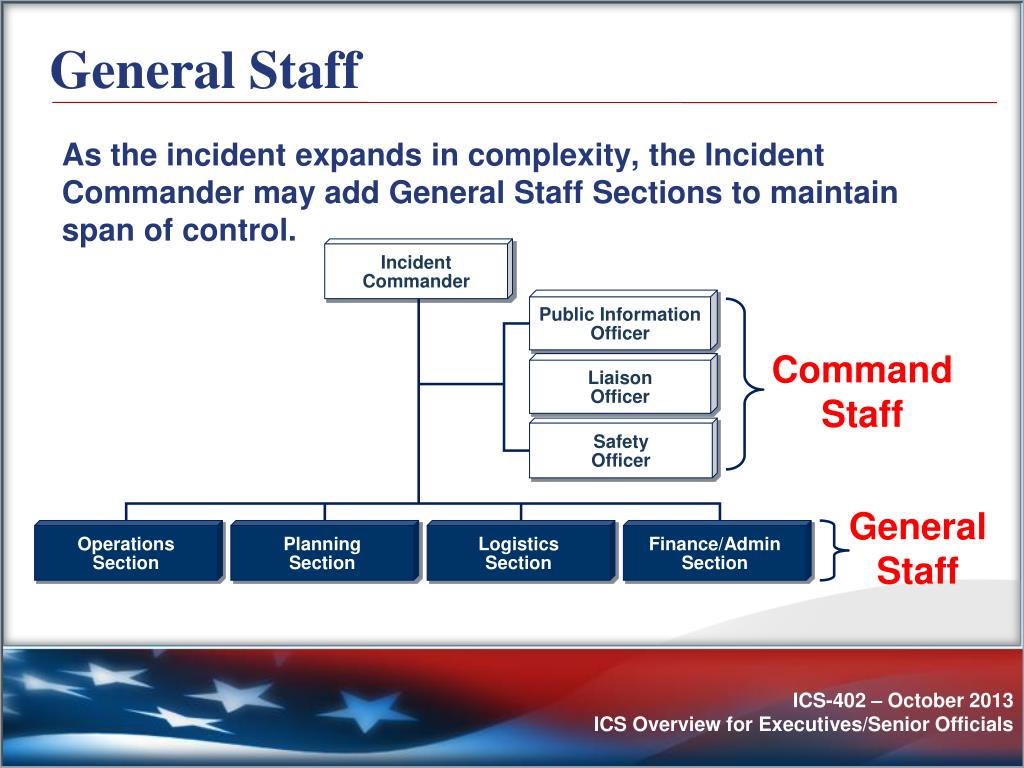

Documenting results for the incident objectives.Developing and issuing assignments, plans, procedures, and protocols to accomplish identified tasks.Identifying strategies, tactics, tasks, and activities to achieve the objectives.Establishing specific, measurable incident objectives.Management by Objectives includes the following:

The Incident Commander or Unified Command (which will be discussed later), establishes incident objectives that drive incident response activities. As the ICS organizational structure expands, the number of management (or “Overhead”) positions also expands to adequately address the requirements of the incident. When needed, separate functional elements can be established and subdivided to enhance internal organizational management and external coordination. The ICS organizational structure is flexible. As incident complexity increases, the organization expands from the top-down as functional responsibilities are delegated. The remaining ICS organizational structure typically develops in a top-down, modular fashion that is based on the size and complexity of the incident, as well as the specifics of the hazard environment created by the incident. As resources arrive and are added to the Operations organization, span-of control, geography, and/or functional responsibilities are considered in shaping how the Operations organization expands to coincide with increasing complexity. The Operations Section develops and expands from the bottom-up in a modular fashion.

The Incident Command System (ICS) establishes Common Terminology that allows diverse incident management and support organizations to work together across a wide variety of emergency functions and hazard scenarios.

Vice baltimore police.The Incident Command System (ICS) is based on the following 14 proven NIMS management characteristics, each of which contributes to the strength and efficiency of the overall system: Common Terminology



 0 kommentar(er)
0 kommentar(er)
